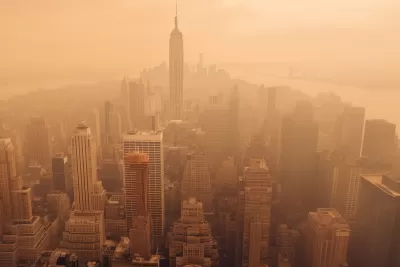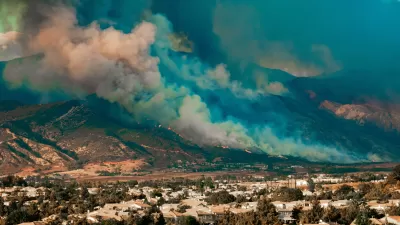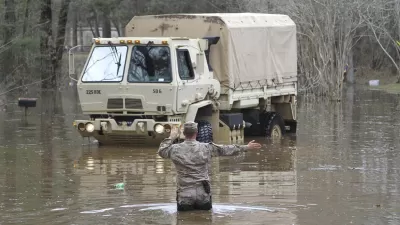“Nearly all” since 2001, according to a new study on California wildfires by the Lawrence Livermore National Laboratory published in the Proceedings of the National Academy of Sciences.

With much of the East Coast recently shrouded in wood smoke due to Canadian wildfires, as with many extreme weather events, there has been debate about how much to blame climate change for the unhealthy conditions. To be clear, a new study from the Lawrence Livermore National Laboratory (LLNL) is focused solely on California, so the findings do not necessarily apply to the Canadian wildfires.
Summer wildfire-burned acreage in central and northern California has “increased fivefold between 1996 and 2021 compared to between 1971 and 1995,” writes Anne M. Stark, an LLNL public information officer on June 12.
Although the drivers of increased temperature and dryness are known, the contribution of human-caused climate change to wildfire activity, relative to natural climate variation, is unclear.
However, a new study by a Lawrence Livermore National Laboratory (LLNL) scientist and collaborators shows that nearly all the recent increase in summer wildfire burned area is attributable to human-caused (anthropogenic) climate change. Anthropogenic simulations yielded burn areas an average of 172% higher than natural variation simulations.
Non-climate factors, including forest and woodland management that has “facilitated fuel buildup, which favors increased burn severity,” continue to play a role, adds Stark.
“Beneath these ‘external’ factors, natural climate variability also influences the occurrence and severity of forest wildfires, creating a noise that can mask the signal of human-caused impacts on wildfire changes,” said LLNL scientist Don Lucas, a co-author of the study.
Canada wildfires
In fact, climate variability may be why wildfire expert Mark Cochrane at the University of Maryland, when asked by Voice of America if climate change was “responsible for the wildfires burning in eastern Canada that supplied the smoke,” responded, a ‘definite maybe.’
“This could have happened without climate change,” Cochrane said. “On the other hand, because of climate change, more and more often the conditions are there for this sort of event.”
Additional reading on the LLNL study in Common Dreams: "Study Shows Climate Crisis Driving Increase in California Summer Wildfire Damage," June 13, 2023
Related in Planetizen: Wildfires Prompt Forestry Debate on Climate Change, Nov. 29, 2017
FULL STORY: Human-caused climate change at the center of recent California wildfires

Study: Maui’s Plan to Convert Vacation Rentals to Long-Term Housing Could Cause Nearly $1 Billion Economic Loss
The plan would reduce visitor accommodation by 25,% resulting in 1,900 jobs lost.

North Texas Transit Leaders Tout Benefits of TOD for Growing Region
At a summit focused on transit-oriented development, policymakers discussed how North Texas’ expanded light rail system can serve as a tool for economic growth.

Using Old Oil and Gas Wells for Green Energy Storage
Penn State researchers have found that repurposing abandoned oil and gas wells for geothermal-assisted compressed-air energy storage can boost efficiency, reduce environmental risks, and support clean energy and job transitions.

Santa Barbara Could Build Housing on County Land
County supervisors moved forward a proposal to build workforce housing on two county-owned parcels.

San Mateo Formally Opposes Freeway Project
The city council will send a letter to Caltrans urging the agency to reconsider a plan to expand the 101 through the city of San Mateo.

A Bronx Community Fights to Have its Voice Heard
After organizing and giving input for decades, the community around the Kingsbridge Armory might actually see it redeveloped — and they want to continue to have a say in how it goes.
Urban Design for Planners 1: Software Tools
This six-course series explores essential urban design concepts using open source software and equips planners with the tools they need to participate fully in the urban design process.
Planning for Universal Design
Learn the tools for implementing Universal Design in planning regulations.
Ascent Environmental
Borough of Carlisle
Institute for Housing and Urban Development Studies (IHS)
City of Grandview
Harvard GSD Executive Education
Toledo-Lucas County Plan Commissions
Salt Lake City
NYU Wagner Graduate School of Public Service





























